Nuclear energy is a hot topic in today’s world. Fossil fuels are a non-renewable source, so fossil fuel reserves aren’t going to last forever.
Other renewable energy sources such as solar power and wind energy are increasing in output, but they can’t yet produce energy to meet the population’s energy needs.
With the demand for energy growing as quickly as the demand to combat global climate change, it’s imperative we explore nuclear power plants as a dependable energy source.
Nuclear Energy Pros and Cons
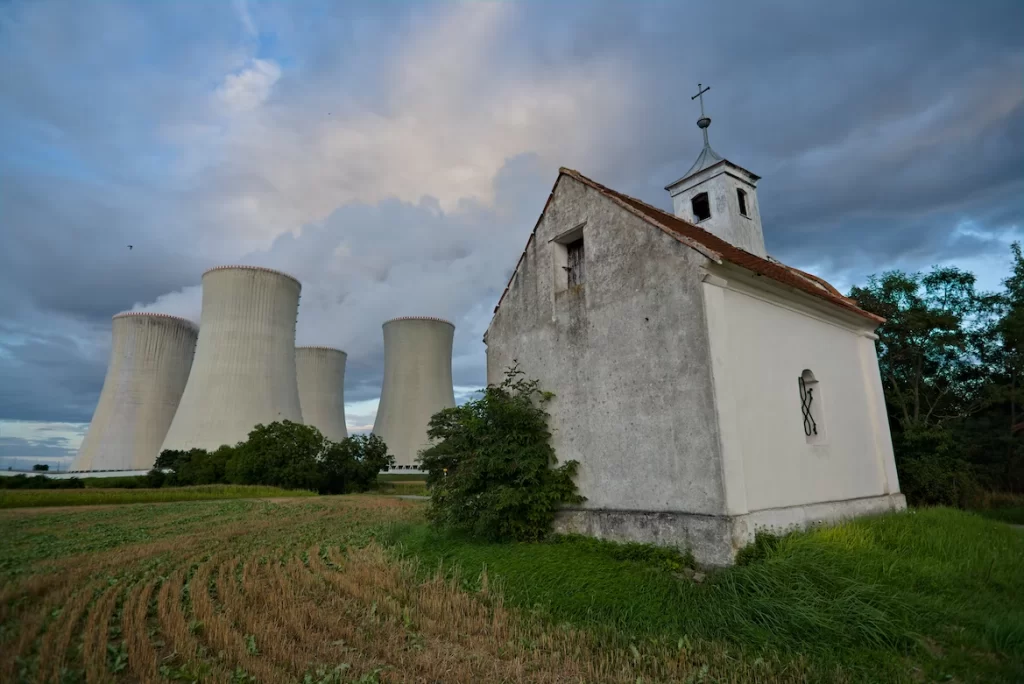
When we’re talking about near-term solutions to the global climate crisis we can’t afford to discount the use of nuclear energy as a dependable, powerful, and efficient energy source.
However, it also can’t be our long-term solution. We’re going to go in-depth on nuclear power to help fuel discussion around this energy source.
Here is a list of pros and cons of nuclear energy to help clarify the discussion before we get into our deep dive into nuclear energy.
What Is Nuclear Energy?
The process used to produce nuclear energy is called nuclear fission. Nuclear fission occurs when the atom of a nucleus is split, releasing very large amounts of energy.
Nuclear energy production occurs as atoms are continuously split, creating chain reactions that provide high amounts of sustainable energy for a long period of time.
How Does Nuclear Energy Work?
Here’s how nuclear power plants create electricity.
- Uranium is a natural resource that is mined in the United States or imported from other countries
- Uranium is milled and stabilized into little ceramic pellets that each contain a stable level of radioactive uranium
- The pellets are stacked into 12 feet long metal tubes called fuel rods
- Filled ruel rods are bundled together in groups of about 200 or so, depending on the nuclear reactor
- Bundles of fuel rods are inserted into the reactor core which can contain several hundred bundles of fuel rods plus control rods and water
- The water in the nuclear reactor is pumped in from a local body of water
- Control rods can be inserted or removed as needed to stabilize the rate of nuclear fission
- The nuclear fission that occurs as these bundles of rods are exposed to each other heats the surrounding water which turns into high-pressure steam
- The steam is used to turn a turbine which generates electricity
- The spent water then passes through the cooling tower and is returned to the original water source for reuse
The giant towers that are visible at a nuclear power plant are the cooling towers. The vapor released from the top is clean steam. This is why most nuclear power plants produce zero carbon emissions.
Is Nuclear Power Safe?
Nuclear energy plants, much like other power generation sources, don’t come without drawbacks and are open to consistent criticism.
Nuclear power plants take over 5 years to build and commission at a staggering up-front cost. A huge part of this expense is the all the safety measures that must be implemented at every stage of production.
It is vital to remember that a nuclear bomb and a nuclear power plant are two different things. Lumping them together is not helpful or productive in the discussion of renewable resources.
Key Points to Remember When Discussing Nuclear Power Plants
- Unlike a nuclear bomb which is designed to create an uncontrolled chain reaction, the radioactive material in nuclear fuel cells is stabilized and controlled to create a reliable, controllable energy source.
- The safety measures in a nuclear power plant control every facet of production from start to finish, including nuclear waste and the storage facility.
- The 1985 Chernobyl disaster was caused by a combination of human error (lack of training) and lax facility safety standards in the crumbling USSR. Untrained technicians ran a low power test with insufficient cooling water that resulted in a steam explosion and ultimately a meltdown.
- The Fukushima disaster was caused by a chain reaction that started with a massive earthquake and tsunami which disabled the power systems and cooling systems for 3 of the nuclear reactor cores which melted down.
- While modern nuclear facilities are engineered and built with every safety measure in place, they are operated by fallible humans who can’t plan for every contingency and sometimes fail to follow safety procedures.
- In a head-to-head comparison, fossil fuels are responsible for far more ongoing death, property loss, and injury than any renewable power source or nuclear power plant on earth.
- In comparison to renewable energy sources, nuclear power plants are as safe for humans as wind turbines and solar power collectors, even when considering supply chain safety.
Concerns about nuclear power plants include radioactive waste, nuclear meltdown, high up-front construction costs, and public safety near nuclear power plants and at uranium mining sites.
All of these are key factors that need to be evaluated, and there isn’t a single answer for the safety of all factors.
The problem with every type of green energy is that there are natural resources that get mined, transported, milled/refined, and ultimately discarded in the production of the collection mechanisms.
Now, let’s take a closer look at some of the major pros and cons of nuclear energy.
9 Advantages of Nuclear Energy (Pros)
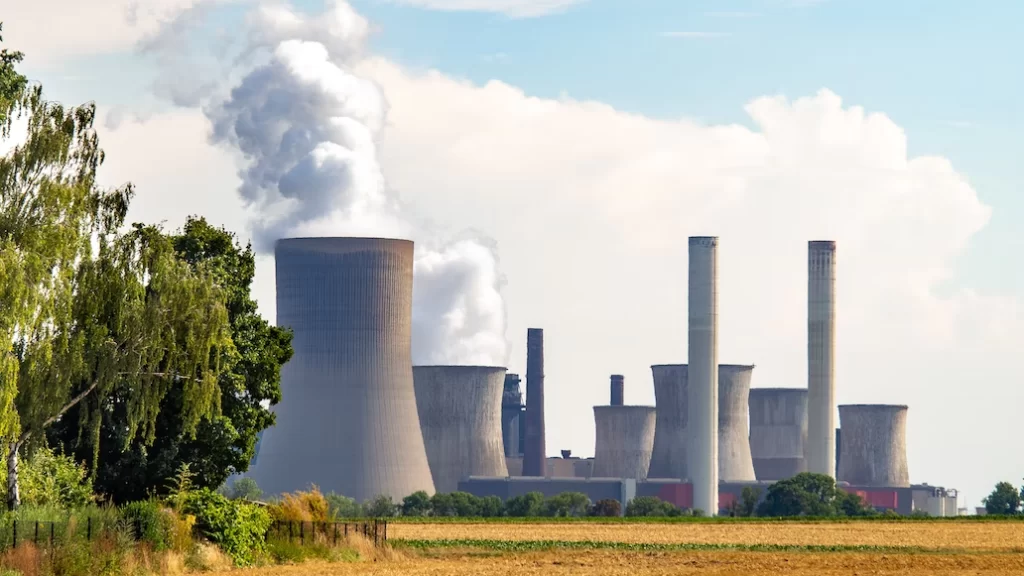
After the meltdown at Three Mile Island in 1978 and the Chernobyl explosion in 1986, the nuclear energy industry fell dormant.
Quite a few nuclear power plants stopped power production, and the construction of new nuclear power plants was brought to a halt.
Since then, a resurgence has occurred due to our increasingly grid-dependent age of technology.
Energy demands are at an all-time high.
One of the advantages of nuclear energy is that it’s reemerging as one of our cleanest sources of alternative energy.
Alternative energy sources are proliferating quickly, but nuclear power is still needed to fill in the gap between global energy dependence and renewable energy technology.
1. Zero Greenhouse Gas Emissions
Compared to coal power plants, natural gas, and oil-powered plants, nuclear offers the lowest (by far) greenhouse gas release.
Carbon dioxide and similar gases, known for depleting Earth’s atmosphere, have notoriously been an issue in the climate change debate.
During power production, nuclear power plants produce zero carbon emissions. Mining and refining uranium then transporting it produces the same amount of carbon dioxide as wind turbines.
Nuclear energy is a good mid-term solution for power production. Uranium reserves won’t last forever, but they emit fewer greenhouse gas emissions than nearly all other energy sources.
Does Nuclear Energy Cause Pollution?
Nuclear reactors have iconic cooling towers. It’s a common misconception that pollution is massively dumped into the air from these towers.
The large clouds you see leaving the cooling towards are nothing more than vaporized water. There are zero carbon emissions and no carbon dioxide in these clouds of water vapor.
According to the US Department of Energy, nuclear power plants provide about 20% of America’s electricity and 56% of all zero carbon emissions electricity in the United States.
If you want to dive deeper into air pollution, we have written an article talking about the actual causes of air pollution and their effects – Number 3 on our list is the most interesting.
Is Nuclear Better Than Solar?
This is a common question, especially when considering the upstream sourcing of raw materials and the downstream disposal of spent materials.
It’s not an apples-to-apples comparison.
- Nuclear power plants release zero greenhouse gases and zero carbon emissions during power generation.
- Solar PV panels release zero greenhouse gases and zero carbon emissions during power generation.
- Nuclear power plants rely on uranium as the fuel source which must be mined. This produces greenhouse gases and carbon dioxide emissions.
- Solar PV panel manufacturing relies on the mining of coal, silica, lead, and other toxic materials which result in high greenhouse gas and carbon dioxide emissions.
- Nuclear power plants produce radioactive waste – some of which can be recycled. The rest must be stored in a secure storage facility.
- Solar PV panels have a 20-25 year lifespan after which they must be discarded. Some solar panel components can be recycled, but some of the materials are hazardous waste.
- Nuclear power stations are as safe as can be, but accidents can happen that potentially release radioactive material.
- Solar panel components may have hazardous waste and heavy metals, but exposure to them is not as lethal as exposure to radioactive waste.
The discussion isn’t as cut-and-dried as many like to believe. Both sources of electricity have issues creating air pollution and soil pollution.
The benefits of nuclear technology far outweigh the disadvantages because the quality and reliability of the power output are astounding once the plant is operational.
Is Nuclear the Cleanest Energy?

It isn’t a question of which type of energy source is the cleanest. Better considerations are the volume of energy output in comparison to raw materials input, affordability, accessibility, and length of life.
- One nuclear power reactor produces the same amount of electricity as 3.125 million PV panels per day.
- One tiny uranium pellet the size of a thimble produces the same amount of energy as 1 ton of coal.
- It takes about 5 years to build a nuclear power plant that will continue to produce clean energy for at least 40 years. Safety inspections suggest that some plants will safely operate for 80 years.
- Solar PV arrays are quick and easy to install with minimal environmental impact. The cost is drastically lower putting arrays within reach of businesses, homeowners, and municipalities.
However, the reliance on coal mining and the small power output for PV panels in comparison to the minimal fuel needs and high power output of a single nuclear reactor makes for an unfair comparison.
The real comparison is in terms of accessibility and comparative greenhouse gas emissions compared to coal plant energy.
In this case, nuclear, solar, and wind energy have the same carbon footprint in comparison to coal mining and consumption for energy production.
2. High Power Output
One of the most appealing reasons for nuclear energy is its incredibly high fuel-to-power output ratio.
It has the capacity to meet city and industrial needs with just one reactor. Many nuclear power plants have multiple reactors.
1 ton of uranium has the same power output as 16,000 tons of coal. All of the uranium used in the history of nuclear power would fill a football field about 10 yards deep.
Renewable energy sources, such as solar and wind energy, provide only enough power to meet residential or office needs.
Wind turbines and PV panels are the energy of the future but they don’t yet have the capacity of nuclear to handle large-scale power needs, especially in the manufacturing world.
3. High-Density Fuel
That’s because uranium is incredibly dense. A pound of uranium is only about 1.3 inches across. This high energy density is one reason that nuclear power is relatively clean energy.
While the uranium must be mined, high energy density means that much less fuel is needed for extraordinary energy output in comparison to coal and oil.
So while we can point fingers at uranium mining as a source of global air pollution and soil pollution, the fuel density means that there is much less mineral disruption from uranium mining than from coal mining.
Something that’s often overlooked in the discussion is the fact that coal also releases radioactivity into the atmosphere during mining.
Given the incredible health and environmental toll of coal mining (which is needed to make PV panels), uranium is a better (though not healthy) option.
4. Inexpensive Electricity

This could be a controversial point because the initial costs to build a nuclear plant are high. Other types of power plants can take similar amounts of time to build, but nuclear plants cost billions of dollars.
That said, nuclear power creates relatively inexpensive electricity once up and running.
Electricity generated by nuclear reactors is cheaper than gas, coal, or any other fossil fuel plant.
Uranium is a fairly cheap fuel source, though the price fluctuates with market conditions. The current price (2022) of a pound of uranium is about $50.
That uranium is stabilized and turned into tiny pellets that produce 20,000 times more energy than their equivalent in coal.
When you combine all that energy efficiency with an average lifecycle of 40-60 years, the low operating costs far outweigh the high upfront costs to build.
5. Stable Electricity Output
Aside from fuel efficiency, stable electricity output is one of the main pros of nuclear energy sources.
Coal is also stable but produces massive amounts of carbon dioxide, other greenhouse gasses, and air pollution.
Wind energy and solar energy are as clean as nuclear energy but they aren’t as reliable. They are good supplements to electricity production but environmental factors have a high impact on energy production.
On the other hand, nuclear energy power plants create electricity regardless of the weather.
This is a huge advantage for technologically advanced areas and high manufacturing areas that rely on consistent and stable energy sources to keep the electrical grid up and running.
6. Zero Reliance on Fossil Fuels
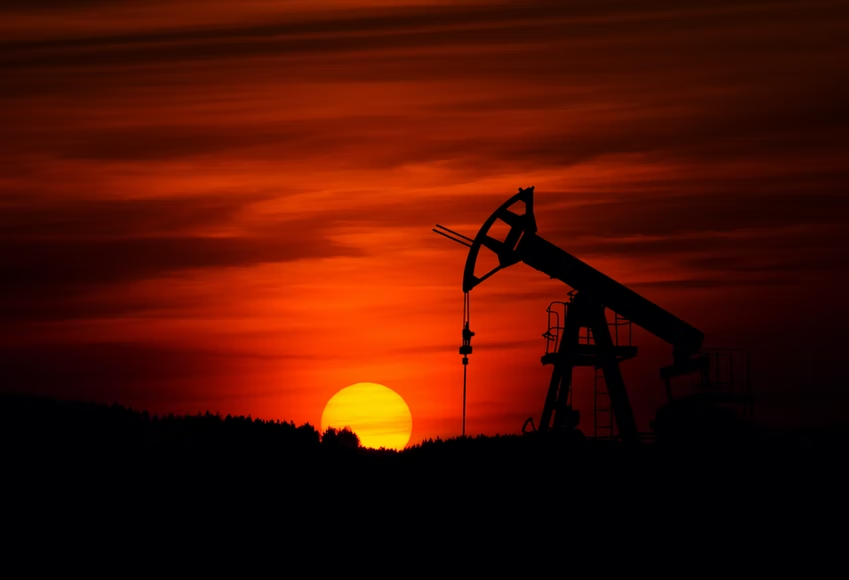
Quite possibly the most important benefit of nuclear energy is that it doesn’t rely on burning fossil fuels. This means it’s not affected by the unpredictability of oil and gas costs.
Using nuclear energy for power generation also means that we won’t be depleting the Earth’s supply of resources as quickly. Nuclear power requires much less fuel to produce a higher amount of energy.
Exception: Uranium mining and transportation as well as nuclear waste disposal requires gasoline or diesel-powered vehicles for now. However, this isn’t different from PV panel and wind turbine materials mining, production, maintenance, and disposal.
With the current supply of uranium, it is estimated that we have at least another 90 years before supply becomes an issue.
There are also other forms of uranium that can be used if needed, extending that timeline even further.
7. Part of the Fuel is Recyclable
Spent uranium fuel rods can be recycled! About 90% of uranium’s potential energy remains intact even after 5 years of continuous use.
Some European countries already recycle their spent uranium fuel rods. The United States needs to get a robust recycling program in place.
Currently, the US stores spent fuel rods in underground and above-ground containers that are incredibly safe and robust. Current fuel rod transportation happens daily with zero impact on the public.
New recycling programs are up and coming with a major part of the research and development happening at the Pacific Northwest National Laboratory.
Also, newer nuclear power plants are in the planning stages that can use “spent fuel rods” as their energy source. It’s an exciting time to be in nuclear power generation.
8. Positive Economic Impact

Nuclear power provides a vast array of benefits to the economy. Local communities are, more often than not, pro-nuclear due to the number of jobs and prosperity a new plant brings.
According to the NEI, one new nuclear plant creates 500 to 800 permanent jobs, about 7,000 construction jobs, and over 500 additional jobs in the community.
This is comparable to roughly 50 jobs for a coal plant which doesn’t account for coal mining and transportation. Still, the numbers are vastly different.
Furthermore, salaries for these nuclear power plant employees are about 50% higher than employees who work in other power generation plants. That is good for individuals, families, and communities.
The main reason local communities are so ecstatic over nuclear plants is that each facility generates close to $500 million annually in sales of goods and services.
9. New Accident Tolerant Fuels
There is an exciting development in the world of nuclear fuel technology in the form of accident-tolerant fuels.
The technology is still developing, but here’s what you need to know:
- Accident-tolerant fuels are designed to withstand unforeseen circumstances (like the natural disaster that caused the Fukushima meltdown) and give operators additional time to respond.
- New pellet designs combine uranium with silicon to create a reactive state that is more powerful than current pellets but also less responsive to disastrous circumstances.
- This new pellet design should also decrease the number of rods needed per reactor and increase each rod’s viability by about 2 years.
- New rod materials are being tested which are much more robust to heat and liquid.
- These new rods will hold up to extremely high temperatures much longer than current rod materials giving operators time to get cooling systems up and running, etc.
These design changes are set to roll out this decade. These will increase the safety of nuclear energy for everyone and help to decrease the amount of nuclear waste that is generated.
7 Disadvantages of Nuclear Power (Cons)

Nuclear energy has a number of positive aspects, making it appealing to more and more countries worldwide. But like all energy sources, it has its downsides.
Many people are scared of nuclear power due to the few, although very significant, accidents that have taken place over the years.
And while nuclear energy operates with little pollution to the environment, it certainly isn’t without its environmental impacts.
Let’s now take a look at some of these cons of nuclear energy.
1. Back-end Environmental Impact
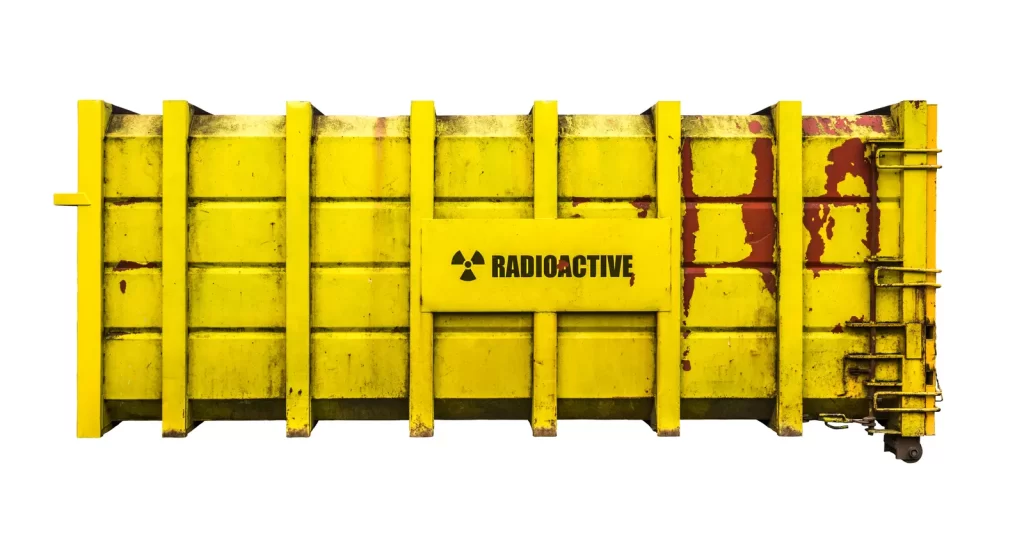
Possibly the biggest concern among nuclear energy advocates is the environmental impact of uranium as a fuel source.
A typical nuclear power plant generates about 20 metric tons of used nuclear fuel per year. The problem is that this spent fuel is highly radioactive and potentially dangerous.
It’s not a fuel source you can discard at a landfill.
It has to be carefully handled and stored (which costs a lot of money), and it requires a hefty amount of specially designed storage space.
Nuclear waste storage and disposal are huge local environmental issues that nuclear communities have to deal with.
However, it isn’t the green oozy liquid imagined in pop culture. Spent fuel rods look the same as new fuel rods. They are 12-foot-long tubes filled with tiny ceramic pellets infused with uranium.
If you were to pull all of that uranium back out of the pellets it would still amount to a single football field’s worth of nuclear waste. That is far less than most people imagine when they think of radioactive waste.
- Spent fuel rods are first stored underwater to help them cool down. It takes 5-10 years to get them to cool down enough to move them out of water storage.
- If cooling fuel rods are not constantly monitored and managed they can have an out-of-control reaction just like those still in the power plant.
- Cool fuel rods are then moved to sealed dry storage.
- Spent nuclear fuel storage facility spaces are considered to be a temporary solution to the problem.
- The United States still has to determine a permanent storage location.
Spent nuclear fuel can take thousands of years to decompose before it reaches adequate levels of safety.
We don’t have that kind of timeframe to figure out what to do with it. While lawmakers are trying to figure out what to do with these spent fuel rods the above-ground storage tanks are vulnerable.
These tanks are vulnerable to weathering, intrusion, corrosion, and even leaking. This is a significant risk, especially in storage areas that were designed decades ago.
For this reason alone, it becomes an issue that other energy sources simply don’t have to deal with.
Until the world gets good at recycling nuclear waste, safe storage will be a pressing issue for this and the next 2 generations.
2. Past History of Nuclear Accidents

While experts in the nuclear industry aren’t necessarily as concerned, the public is largely terrified of potential nuclear accidents.
Safety is a big deal in the nuclear industry these days, and rightfully so.
While significant accidents are incredibly rare, history cannot be ignored. And when they do happen, it’s a major problem.
With the Fukushima incident in Japan in 2011, the global population was reminded that nuclear still has its drawbacks.
While causalities actually weren’t high, the environmental impact remains an issue today.
Chernobyl is widely known as the worst nuclear accident in the history of the industry.
Even though it was more than 30 years ago, the harmful effects are still present to this day, especially to local inhabitants.
As we discussed in our section on nuclear safety, the issues surrounding nuclear power plant safety aren’t always cut-and-dried.
- Human error and misjudgment is often involved – something that can’t be avoided
- Older facilities aren’t as safe as new ones
- In the case of Chernobyl, the failing Soviet Union was largely to blame for the decrepit poorly-designed facility, lack of trained workers, and lack of focus on safety
- Three Mile Island suffered a partial meltdown when a lack of cooling water allowed the reactor core to overheat. No one died or was injured in the incident. Continuous monitoring has demonstrated that the extremely low levels of radiation had no adverse effects on the population, flora, or fauna in the area.
These accidents, even though they result in more robust construction and better training remind us that while nuclear accidents are rare, they do happen and they can be catastrophic.
Nobody can know the future and plan for all events that could cause harm to a nuclear reactor. We must weigh the potential for catastrophe against the immediate benefit of reliable clean energy.
3. High Up-front and End-stage Cost
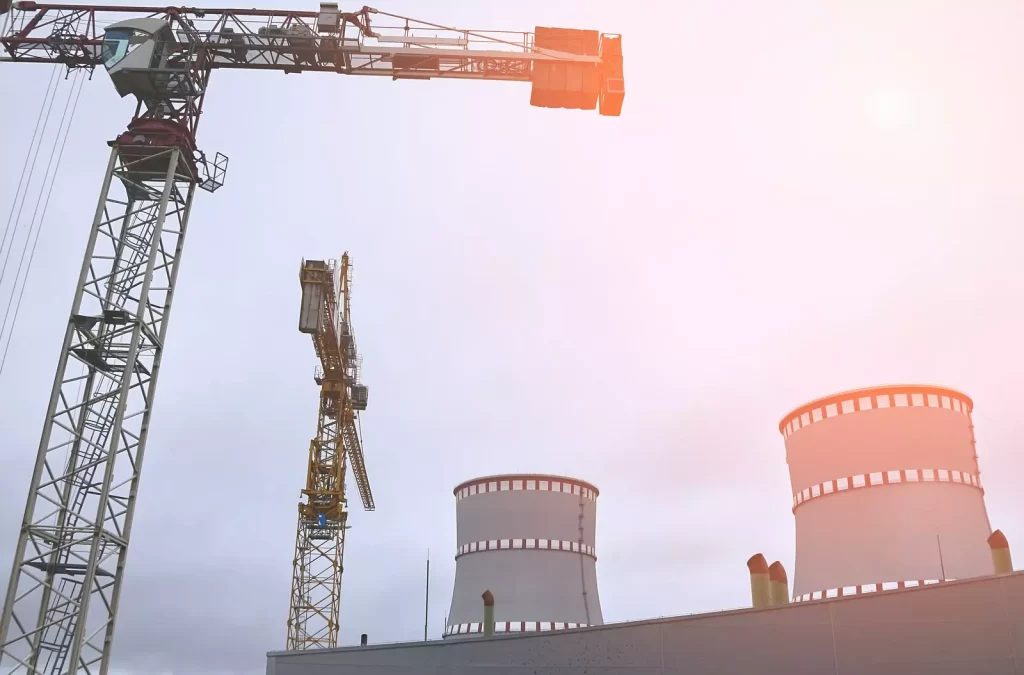
We’ve already discussed how cheap and efficient nuclear plants generate electricity while operating.
Usually, the pros outweigh the cons; however, the cost can be a major deterrent for countries looking to build new plants.
One argument against nuclear power is that nuclear energy takes so long to implement safely that it isn’t worth it considering the human and environmental toll exacted by current air pollution problems.
Let’s compare the construction timelines for various types of alternative energy solutions.
- A solar field can be constructed in 6 months to 1 year (not including planning phases).
- A hydroelectric dam takes anywhere from 6 to 10 years to build. That’s longer than a nuclear facility but the output is clean with zero residual waste.
- A natural gas plant takes 3 to 6 years to build (minus planning) but it emits greenhouse gases.
- A wind power field can be installed in 6 months to a year, though it takes longer to build the wind turbines.
The construction of a new nuclear plant can take anywhere from 5 to 10 years to build, costing billions of dollars.
These costs are recouped during the facility operation and the ultimate power bill for the facility is very low. However, many nations don’t have the money required for the initial startup of a nuclear power plant.
On the back end, spent fuel rod handling and storage plus decommissioning costs aren’t anything to scoff at either.
Furthermore, the storage facilities currently in use are only temporary. Money must be invested in permanent storage facilities and ultimately recycling programs need a large investment for global health.
The argument that a nuclear power facility takes too long to construct falls apart when compared to other clean energy solutions. However, a valid argument is the monetary investment.
While wind turbines and solar panels aren’t as efficient or reliable as a nuclear facility, they can be installed with a more modest investment and expanded over time.
4. Radioactive Waste Disposal
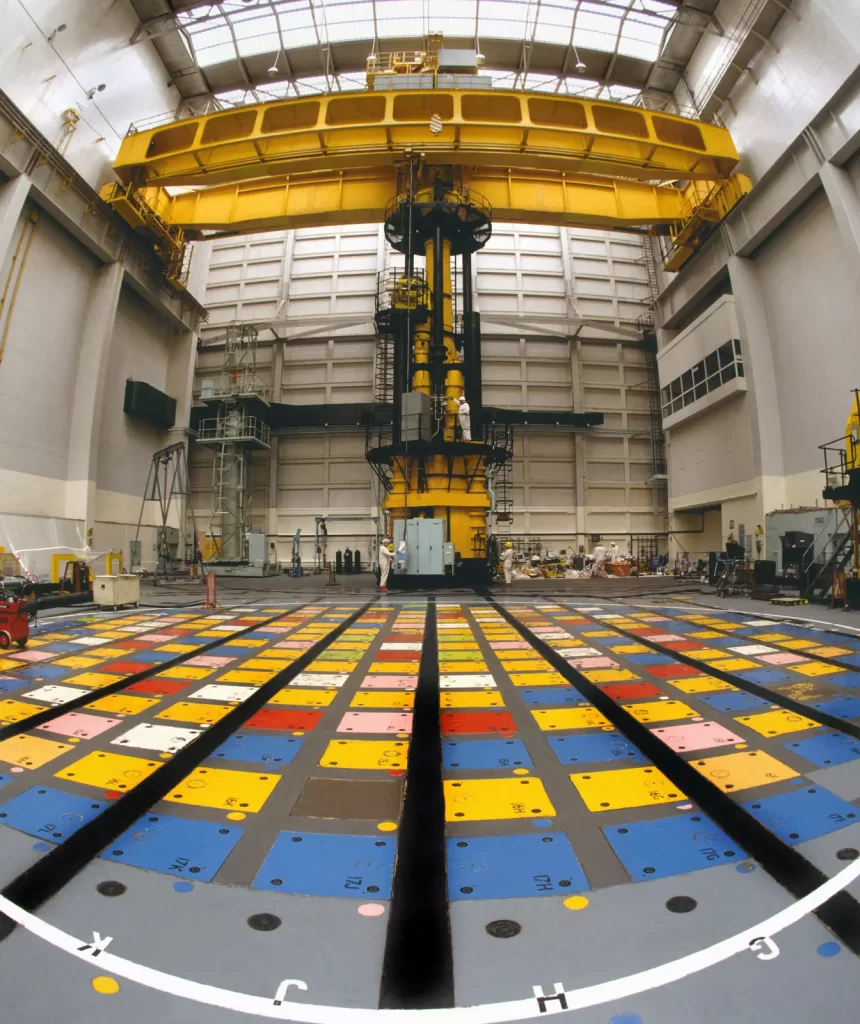
A uranium fuel rod can be used for about 6 years before it needs to be removed. It isn’t removed because it has cooled, but because the nuclear fission reaction is not as vigorous as it once was.
To produce energy at peak levels fresh fuel rods must replace older ones.
- Older rods require attention during water storage because there is the risk that they will overheat and cause a meltdown catastrophe.
- This water storage takes up to 10 years to make the rods cool enough to remove from water.
- After rods are removed from the water storage tank they are placed in dry storage.
- Storage is a big issue because leaking storage tanks expose surrounding areas to radiation.
- The government has not yet decided what to do for permanent spent fuel rod storage.
Money must be invested in permanent storage facilities and ultimately recycling programs need a large investment for global health.
The biggest issue with finding a permanent storage location is that nobody wants to have it in their region, and who can blame them?
5. Target for Terrorism
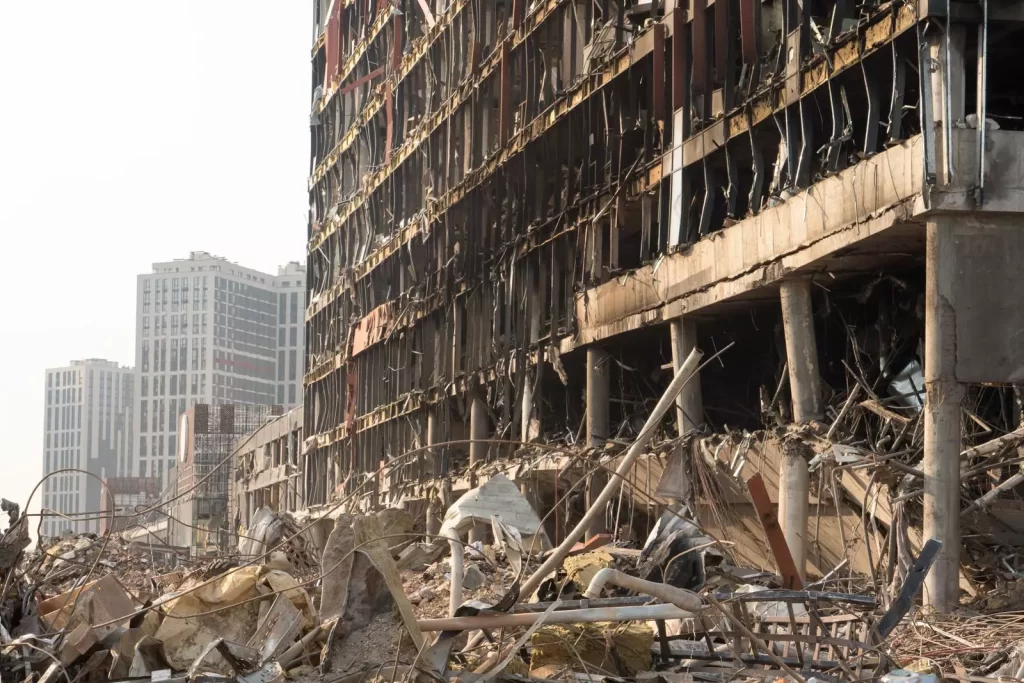
Most people who hear the word “nuclear” immediately think of an atomic bomb.
While nuclear power plant generation is certainly different from the creation of nuclear weapons, it represents a threat to national security if given to hostile enemies.
- The uranium used to power nuclear plants is a different grade than weapons-grade uranium used to make nuclear weapons.
- The problem is that hostile countries can enrich uranium for nuclear weapons under the guise of nuclear power development.
- Nuclear technology in the wrong hands presents a problem for most of the free world.
- The last several decades have seen societies worry about the development of “dirty bombs.” These are regular bombs laced with spent radioactive material that can cause mass destruction due to the residual radiation present in the material.
Even though security is tight and the probability of an event is low, it’s still something to consider that you don’t necessarily have to worry about with other traditional sources.
Regular sources of electricity are vulnerable to a terrorist attack, but it involves nothing more than property destruction and grid loss. In the case of nuclear power, the destruction could be catastrophic.
6. Not a Renewable Fuel Source
Last but certainly not least, nuclear energy is not a renewable fuel source.
Contrary to popular belief, the global supply of uranium is limited. While not a fossil fuel, we will run out of it in about 90 years.
This is why development of recycling is so important – so we can stretch the usefulness of our limited supply of uranium for as long as possible.
Typical renewable energy sources such as solar and wind are an infinite supply.
Uranium has to be mined, synthesized, then activated to generate nuclear energy, then decommissioned and stored at the end of its useful life.
So not only is it non-renewable, but it creates a source of waste that wind turbines and solar panels don’t have to the same extent.
In the long-run, nuclear is not the most viable option. For now it is incredibly useful in curbing fossil fuel consumption and limiting greenhouse gases, but it is not a total solution for the future.
7. Cancer From Radiation Exposure
Let’s be clear: there is no risk of cancer from receiving power generated by a nuclear power plant. There is also no risk of cancer from living in a community served by nuclear power.
There is a huge risk and high probability of cancer for those exposed to the ionizing radiation that is released during a nuclear meltdown type accident.
- The 2011 Fukushima Daiichi disaster has resulted in a high rate of thyroid cancer in the Fukushima prefecture in comparison with global rates.
- 266 residents have been diagnosed with thyroid cancer since 2012.
- The prefecture has a population of 380,000 people.
- “Normal” thyroid cancer rates are about 2 people per million.
While this disaster was caused by a natural disaster that was unforeseen, the fallout is real and ongoing. The cancer connection cannot be ignored.
It’s important to put this information in perspective.
- There are 440 nuclear power reactors online globally.
- There are another 220 research reactors.
These reactors are completely sealed and operating normally and safely.
Most people believe that one accident at one plant in about 40 years that negatively affects a few hundred people does not warrant killing a system that illuminates the lives of millions of people.
Other people disagree. The fact is that the global population relies on nuclear energy for now. It will not always be so.
As renewable energy sources become more widespread and affordable they can take more of the workload and begin to replace nuclear energy in the real world.
The other real inhibiting factor that is keeping renewables, specifically wind and solar energy, from taking their rightful place is the lack of good battery technology.
Wind turbines and solar panels tend to be fitful and are incredibly weather dependent. As battery technology progresses so will the viability of wind and solar.
Of course, these advances will also increase the mining of rare and toxic metals for batteries, increasing the damage to the earth. There isn’t a power solution without drawbacks.
What Cancer Can You Get From Radiation?
According to the United States Nuclear Regulatory Commission (U.S. NRC),
“Cancers associated with high dose exposure include leukemia, breast, bladder, colon, liver, lung, esophagus, ovarian, multiple myeloma, and stomach cancers.”
U.S. NRC
The most common type of cancer from exposure to ionizing radiation is thyroid cancer. It’s treatable, but patients will spend a lifetime on thyroid hormone replacement medications.
These cancers are not any different from cancer that a person might develop due to any other genetic predisposition or exposure to toxins and other environmental hazards. Treatments are the same.
Read More: Medical Use of Nuclear Energy. We explore nuclear energy in the medical field.
What is Ionizing Radiation?

Ionizing radiation is made from subatomic particles. It is the same type of radiation that causes skin cancer from overexposure to the sun’s rays.
It’s also the same type of radiation that you’re exposed to during a medical x-ray or a dental x-ray.
Everyone is exposed to ionizing radiation daily. This type of radiation causes cancer because it damages DNA which can lead to gene mutations that cause cancerous growths.
When people are exposed to nuclear radiation that damage occurs quickly, increasing the likelihood that they will develop cancer. It also speeds up the incidence rate.
The Bottom Line
More often than not, the pros outweigh the cons when it comes to nuclear energy sources.
It has very low operating costs, produces sufficient energy to meet demand, and has a variety of other economic benefits that can’t be ignored.
While accidents and the environmental impact of spent fuel need to be considered, we simply don’t have any better options for mid-term mass energy production.
As better solutions come along, the future of nuclear energy will have to be re-examined. New developments in renewable resources like solar, wave, tidal energy, and wind energy will dramatically change the discussion.
For now though, nuclear remains one of the best options for solving Earth’s future energy needs without pumping greenhouse gases and air pollution into the atmosphere.
What do you think? Join in the discussion below!
